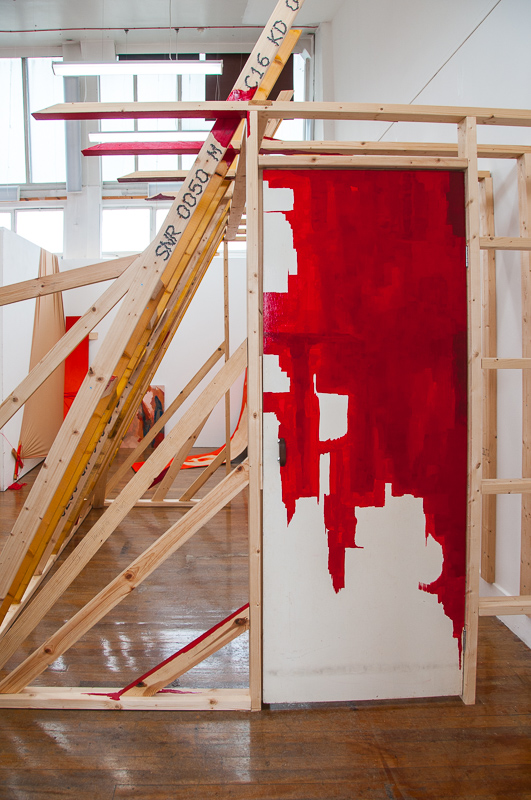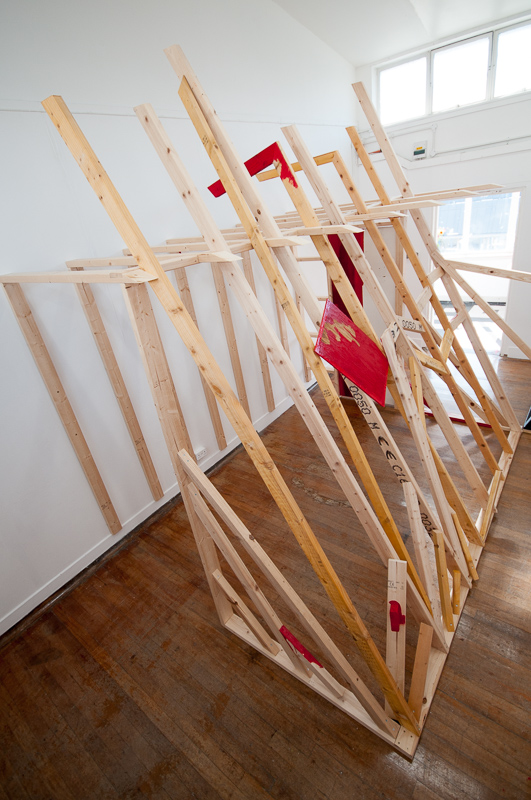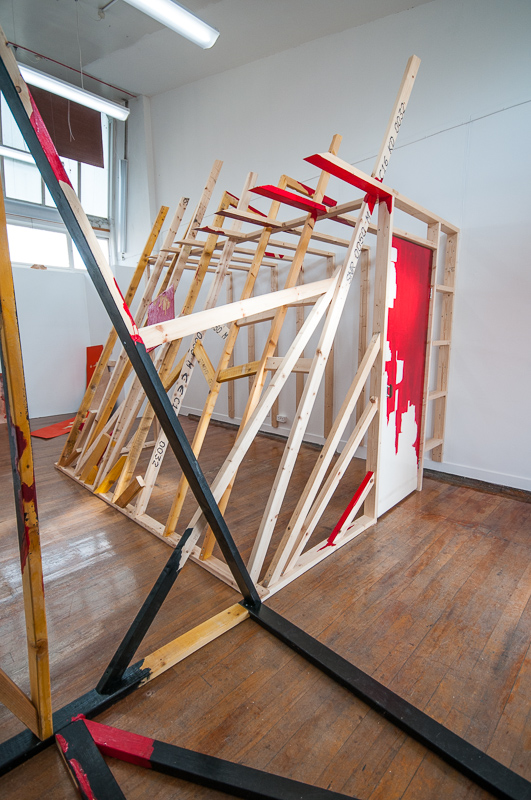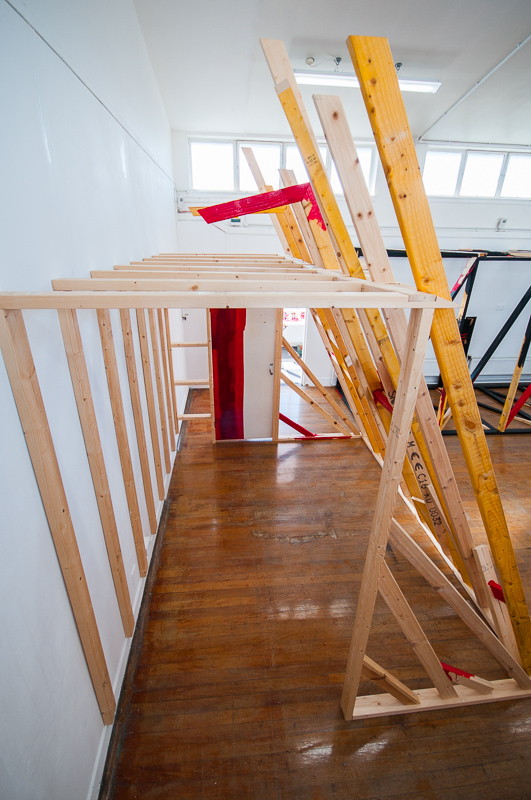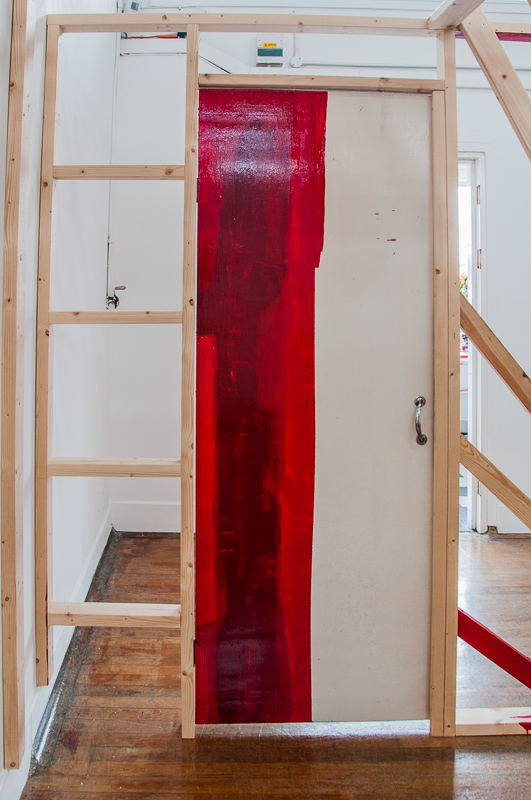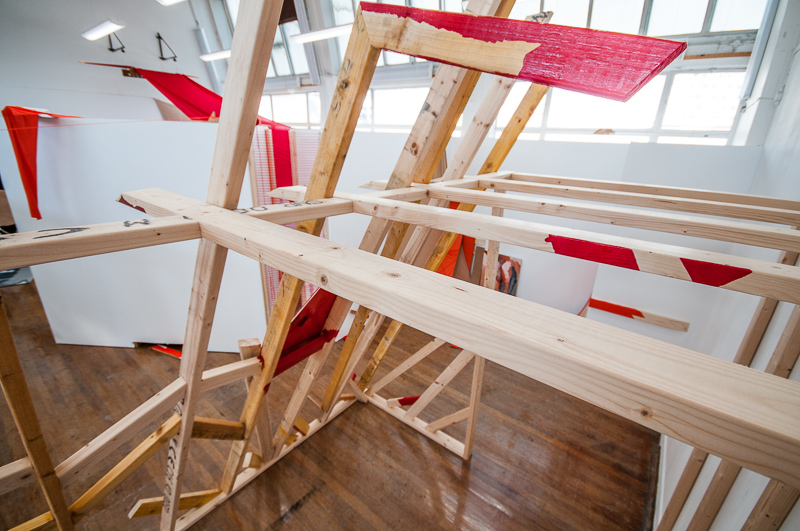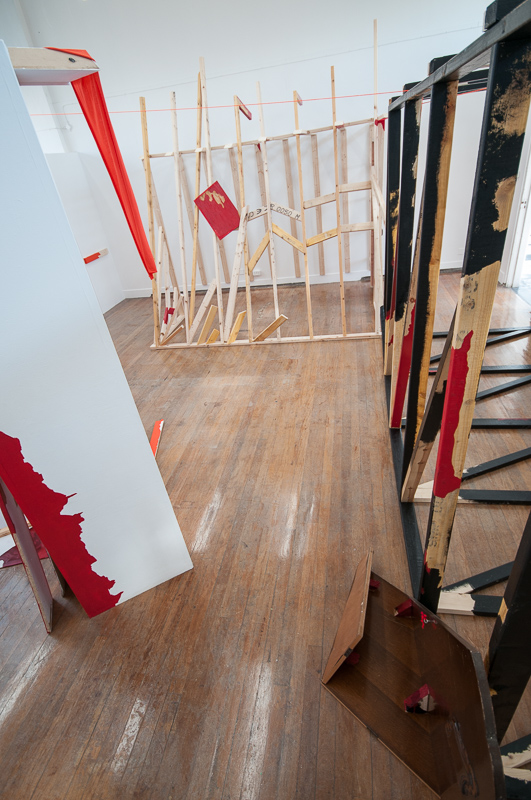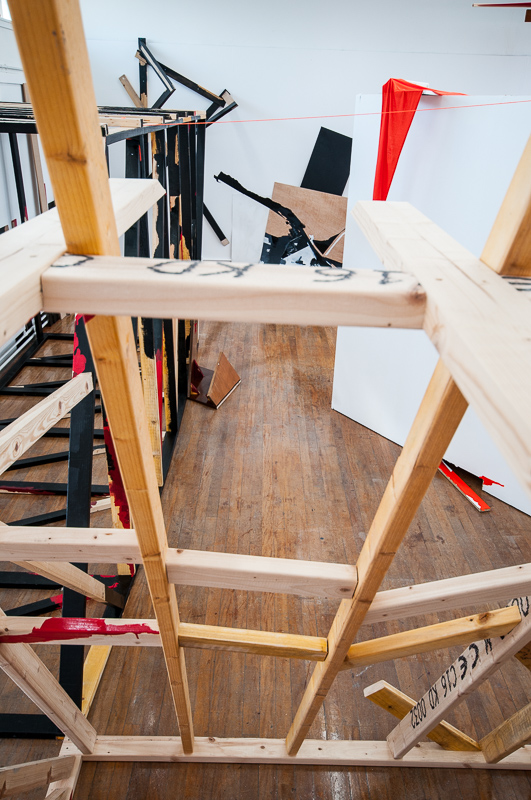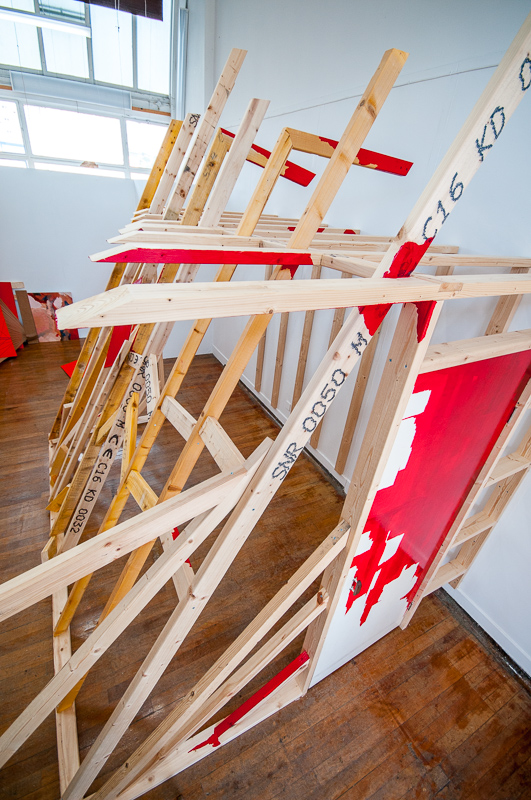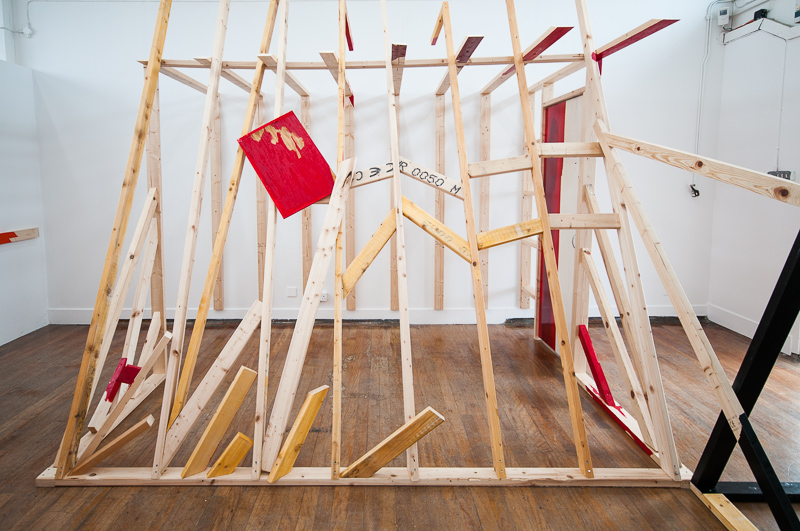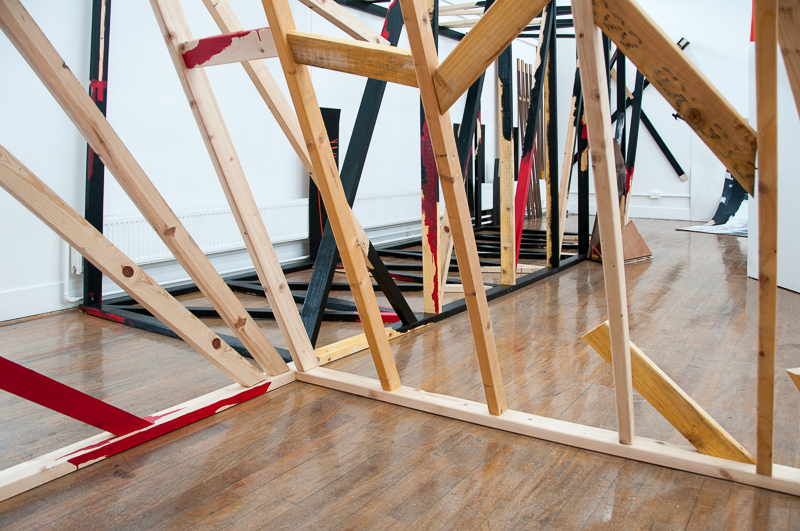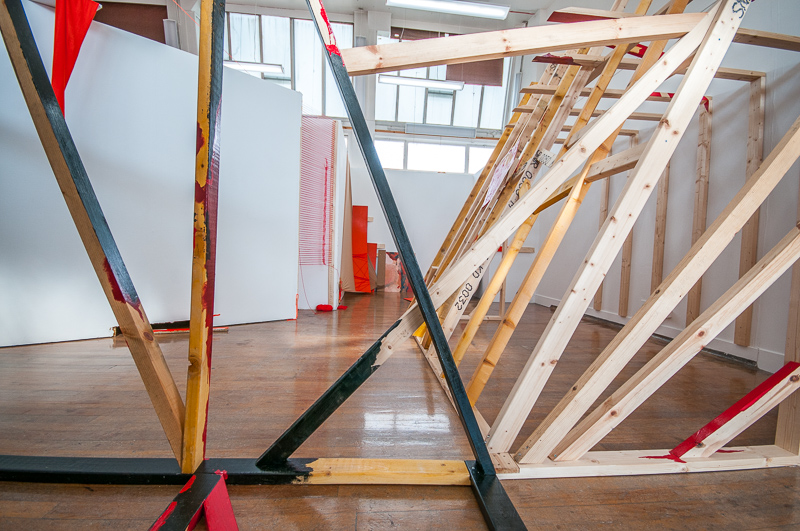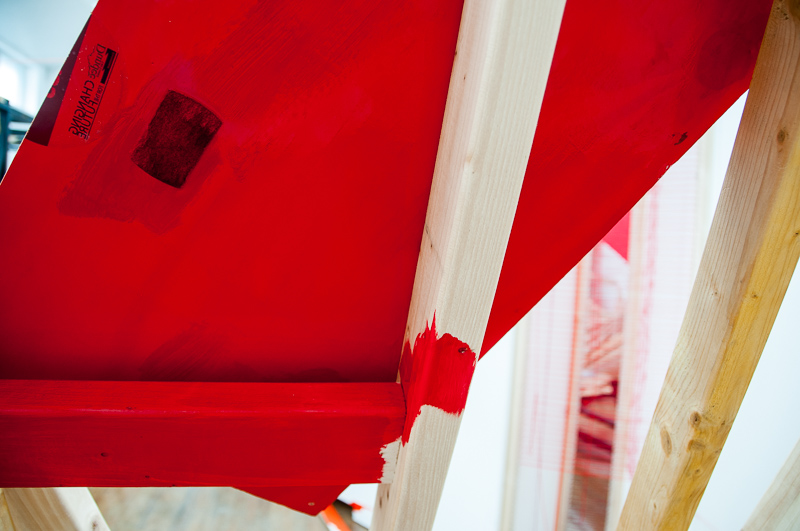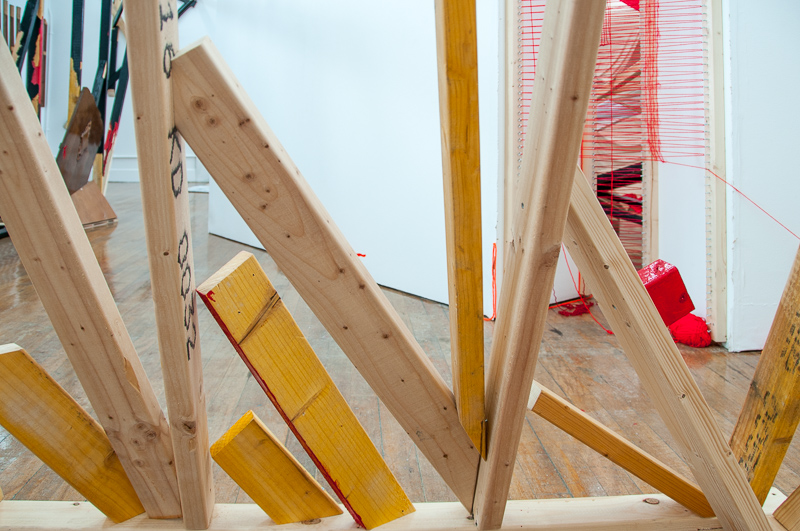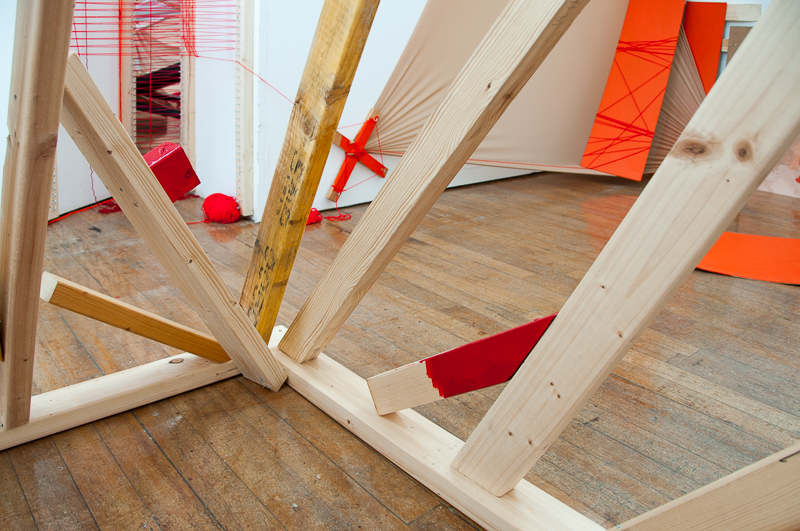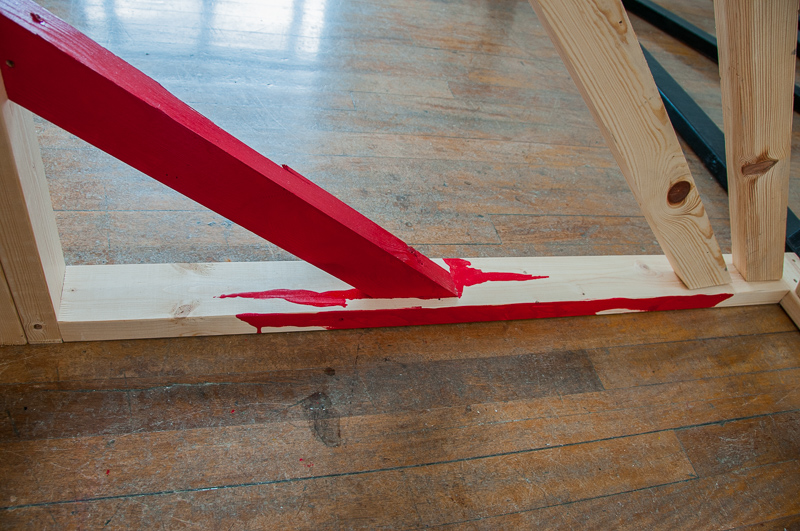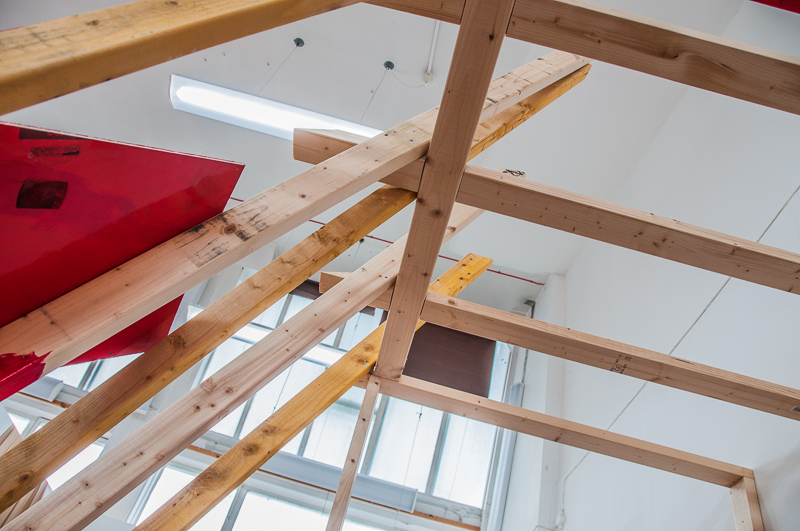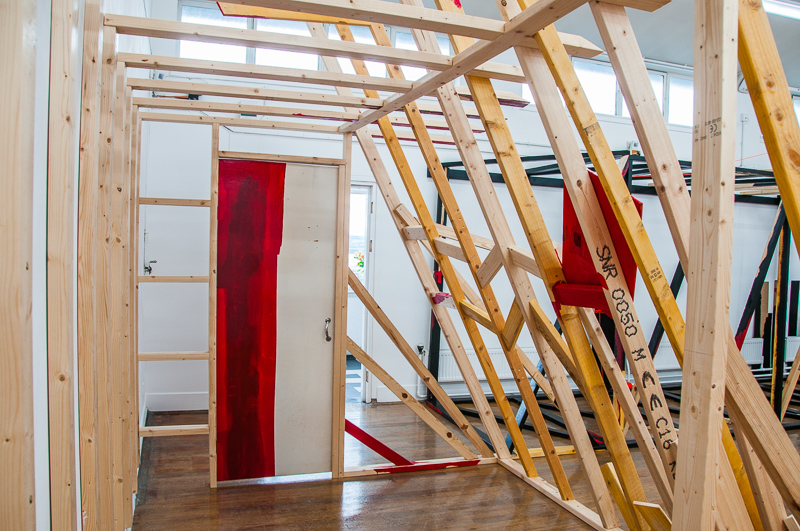There's no Place like 'Home'? 2017
To shelter, to build a sanctuary, establish one’s ‘place’ in the world is a primary human instinct.
Helen Angell-Preece creates architectural installations utilising awkward angles, describing a lived space within - at once familiar, yet also uncomfortable, unfinished and unstable. Hybrid wooden structures that could be sections of stud walling or lean-to roofing, create an extended and defined threshold crossing for the viewer to enter and move through.
Standing at this threshold, between outside and inside, we are unsure whether to enter or keep out. A place in transition, from one state to another. We find ourselves in the position of the stranger or the foreigner, between hostility and hospitality.
Close attention to choice of materials is important. Contrasting densities of wood, fabric, wool and paint are utilised to exaggerate and enhance the textures of our everyday living. The structures framing our buildings and homes and the more fluid contact and association of our clothes, bodies and furnishings are invoked. These are universal, non-hierarchical materials through which many of us directly experience the world.
Here, soft stretch fabric and seemingly more robust building construction materials are treated in the same way – cut, folded, stretched, woven, torn, frayed, dripped and draped – to articulate a layered and compound-angled aesthetic language.
Red stains show through as the façade slips, the undercoat and vulnerable underside revealed. Colour, like signals choreograph alternative routes or journeys throughout the space.
Growing up travelling between Scotland and England, familiarity and a sense of belonging are found in the non-places such as motorway service stations and explorations through city edgelands. The artists’s practice is a physical mapping of space, using her own body as a measure, to understand and to test out the limits of her own ‘space’ or sense of ‘home’ in the world.
Angell-Preece believes a place with multiple viewpoints is a position of power. A willingness to take the risk of the displacement of our angle of vision (Bhabha, Homi. 2017) is one that reaps rich rewards, understanding and new ways of thinking and relating with the Other, across fixed, defensive borders and boundaries.
CLS wood, door, interior gloss, Perspex, plywood. 300cmx250cmx285cm

